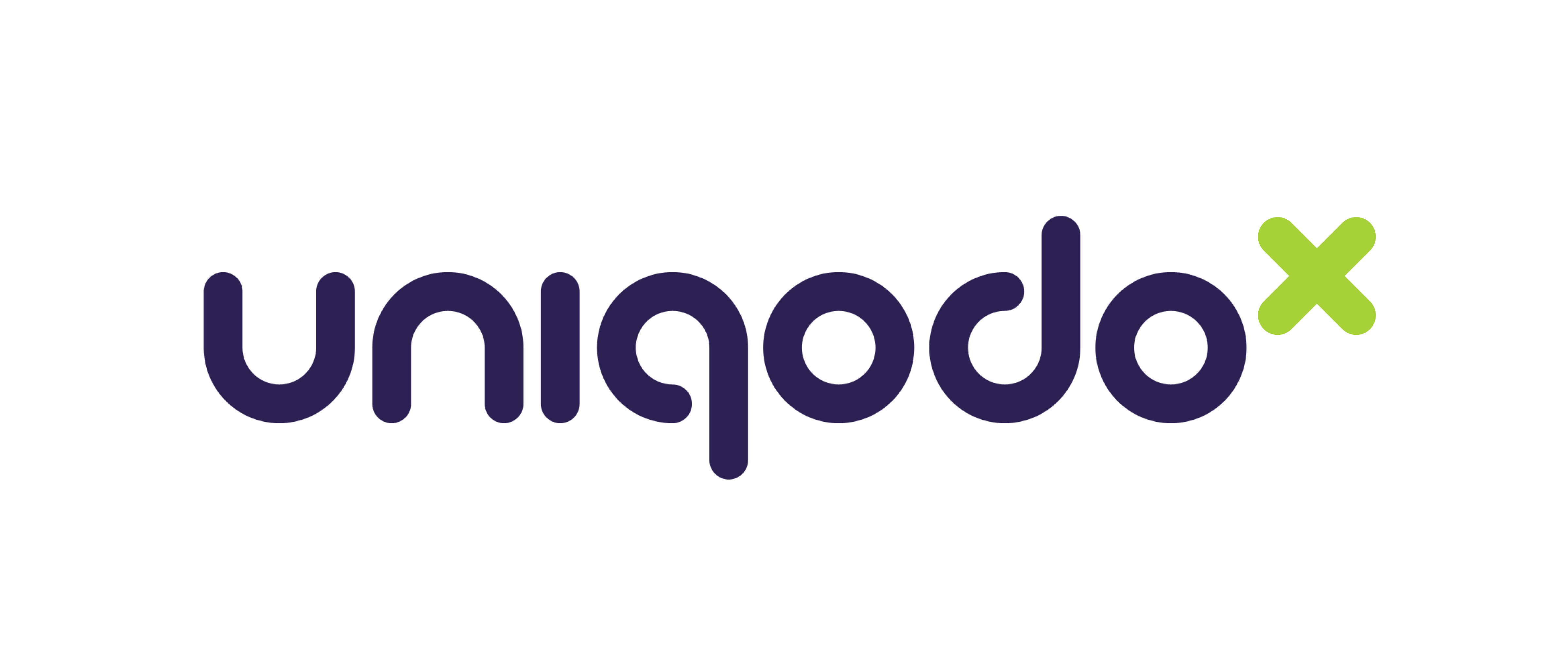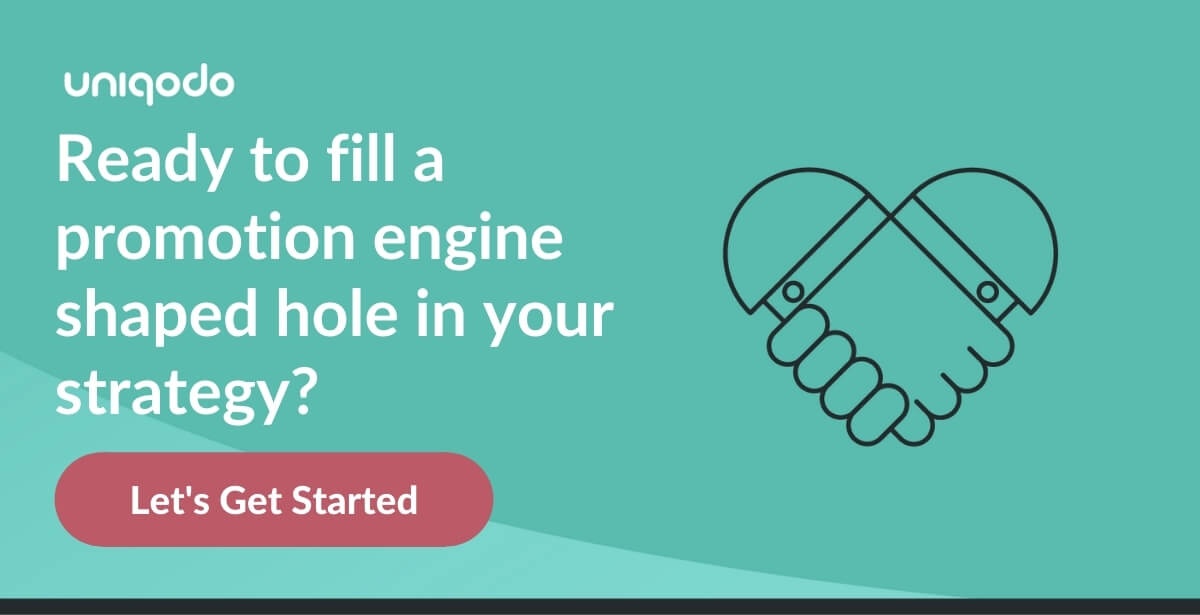Retail marketing teams are constantly looking for new ways to improve the effectiveness of their campaigns, especially right now when the retail industry is undergoing rapid change. How can retailers make improvements while measuring whether they work?
The answer is tracking the right metrics, and then using that information to improve your results. Promotional marketing strategies can play an important role, particularly when targeted at specific metrics. This article will cover how you can do exactly that, pairing creative marketing strategies against specific metrics and outcomes. Let’s get started.
1. Conversion rate
Conversion rate is the percentage of page visitors that become buyers — a great way to help you assess which marketing campaign is attracting the most paying customers. You’ll determine what customers look for and where to put your efforts, which will optimise your conversion rate.
Pro-tip: Don’t panic if your rate seems low. The average ecommerce conversion rate is only 2.58%. For some industries, it’s even lower.
How to improve your conversion rate:
1. Give customers a reason to buy: The easiest way to increase your conversion percentage is through content that encourages purchases, like presenting customers with enticing offers and discounts. You can make these even more compelling if you create a sense of urgency. For example:
-
Short expiry discounts: Great for driving immediate conversions when they appear on your website, these discounts entice users to purchase more quickly.
-
Diminishing discounts deliver a sense of urgency. An example is one that starts at 30% and reduces by 5% every 5 minutes the discount is displayed.
2. Target shopping cart abandonment: The average rate at which customers desert their cart without purchase is huge: 75.6%. This accumulates to $18 billion of missed revenue, annually.
25% of abandonments are from dissatisfaction with the total end price. Single-use discount codes can help regain missed cart opportunities by pushing your customers to convert. In turn, you’ll increase your conversion rate and total revenue.
But, how do you implement promotions to limit shopping cart abandonment?
-
Send abandonment emails: This is simple enough, but timing matters. At least one study suggests that you can double your success rate by sending the follow-up within 20 minutes. Include a discount directly linked to the shopping basket, and watch your conversion rates climb.
-
Mix things up: Although abandonment emails are great, you don’t want to condition shoppers to abandon their cart in order to get a discount. Set up distribution criteria within your promotional tool that will keep shoppers guessing.
-
Scarcity marketing: Availability limits can motivate customers to action. You can use this in email marketing around cart abandonment in place of discounts. For example, you can simply point out in the customer’s email that there are ‘ONLY 2’ items left of the one in their basket. This increases the sense of urgency and prompts a customer to follow through with their purchase.
2. Bounce rate
Tracking your bounce rate is another key way to see whether your customers are engaging with your content. It’s the metric to go to if you want to know the percentage of visitors that viewed your website but left without taking action.
It also shows if you have gaps in your website’s marketing funnel that’s not driving your visitors to a place where they can convert. This metric also has a huge effect on the others — a lower bounce rate likely means a higher conversion rate and ROMI (see the next section). But it’s also a specific thing to focus on, allowing you to better diagnose why other metrics might be letting you down.
Pro-tip: Aim to be at least in the average bounce rate of ecommerce stores, which is 45.68%.
How to improve your bounce rate:
1. Keep customers interested: You only have 0-8 seconds to grip any customers that visit your site. That means it’s crucial your landing page and full website offer something different.
Retail sites have an average bounce rate of between 20% and 40%. But a simple landing page has one of between 70% and 90%. You can limit these figures by interesting your visitors with appealing design and offering unique and gamified vouchers on your website. A great strategy is to deploy these promotions within “exit intent popups” — an offer that “pops up” as the user closes your page, making sure that they really want to leave.
2. Use personalisation: Personalisation is increasingly pivotal for shoppers. Consumers are 210% more likely to call personalised content “important” rather than having no opinion, which has a huge impact on their likelihood to convert. The more personalised your content, the less likely you are to have a high bounce rate.
Some great ways to implement personalisation to decrease bounce rates are:
-
Using purchase and browsing history: Knowing what your customers have bought in the past will help you predict what they want in the future. That means you can offer unique discounts for those specific interests — ones that will decrease bouncing.
-
Personalise with promo emails: Individualised emails will press shoppers to have more meaningful engagement with your website when they are linked to it through email marketing.
3. Return on marketing investment (ROMI)
ROMI is like return on investment (ROI), but focused on marketing investment. It calculates the revenue a marketing campaign makes related to the running cost, and is key to knowing if your marketing is successful. 72% of companies say that a focus on ROMI is responsible for their marketing success.
Pro-tip: Remember that ROMI is just one metric to consider and is best applied alongside other metrics. Be wary of putting too much weight on one.
How to improve your ROMI:
1. Make your marketing campaigns unique and enticing: It’s all about standing out from the crowd. You’re competing with 12 to 24 million other online stores, so it’s crucial that your marketing offers something new.
A lot of this comes back to personalisation — personalising messaging, offers, products etc. 72% of customers state that they will only engage with personalised marketing material. But there are a few tactical easy wins when it comes to ROMI.
-
Send birthday emails: Birthday promotion emails are opened 2.5 times more than standard email marketing, and are a great way to boost your ROMI.
-
On-site overlays: You can create tailored overlays that target different audiences, and specific product or search queries to offer unique incentives — grabbing the attention of relevant audiences.
-
Closed offers: By targeting specific customer groups, you can provide steeper discounts for very specific purposes. Often a valuable part of a customer loyalty programme, these segmented and closed offers can be hyper-targeted and limited in application to maximise outcomes while minimising costs.
Pick a theme: Themes and broad stories make things easy to remember. You can increase the impact of a campaign by making it about something — and then discounting relevant products. For example, a “winter survival sale” promoting items related to keeping warm or having fun at home.

2. Gamification: Gamification is the strategy that brings fun back into shopping by turning it into a game and enticing customers to purchase. It will help improve your ROMI by simply making a more engaging framework with which your customers can participate.
Gamification generally relies on promotions, and unlocking promotions through complex validation criteria. This is particularly useful for customer loyalty programmes, and can be set up to influence customer behaviour to align with business priorities.
Some examples of how to use single-use codes to improve your ROMI through gamification:
-
Utilise prizes: A chance to win rewards based on other purchases will encourage shoppers to convert. Options could be:
-
Buy one item of every clothing category and win a £100 voucher.
-
Get 10% off every time you buy items in new categories.
-
-
Tie gamification discounts to outreach strategies: Present discounts around referring new customers and giving customers vouchers to hand out to their friends increases your customer base and your ROMI. Or require customers to purchase slow-moving (or otherwise challenging to sell) products in order to unlock a prize.
-
Employ QR codes or hyperlinks: Putting links to unique, single-use codes on your website gives customers the opportunity to win bonus gifts. They’re more likely to go to your site to check for discounts and more likely to purchase.
-
Implement mystery rewards: This is a key way to grab customer attention because of intrigue — tying back into the first point about being unique and enticing. Each code can be turned into a game of chance with email marketing using subject lines like “mystery prize awaits”. Customers are tempted to play the game and your chance of driving sales increases.
Be targeted and don’t get carried away
If you want to focus on improving your ROMI, you need to avoid runaway costs that can be associated with promotional marketing strategies. That means using technology that can prevent discount codes leaking online, and allow you to control your promotional budget. Just as importantly, you need to deploy strategies that are aligned directly with business outcomes — targeting products or services that will benefit most, without eroding margin.
Promotions can actually improve marginal performance if done right. For example, a hotel might use promotional strategies to maximise occupancy, or an ecommerce brand could target stock that is about to go out of date — improving overall outcomes. But to do that, you need a concise strategy and the tools necessary to deliver.
Make the most out of technology
If you’re going to improve your marketing metrics, you need creative strategies and clever promotional marketing across your marketing channels. The key to that is investing in technology that will assist you in creating personalised campaigns, and then analyse how successful those campaigns are in driving the outcomes you need.
For example, the ability to easily A/B test messaging and promotion types is a valuable way to make sure that you are connecting with your audience in the most effective way possible. And the more you can leverage technology to access customer data and automate the distribution of promotions, the more targeted (and more effective) your campaigns can be.
If you want to learn more, check out our free eBook — Do You Need a Promotions Engine? — or get in touch, we’d be happy to help.




Subscribe to the Blog